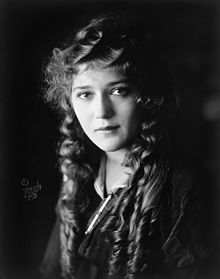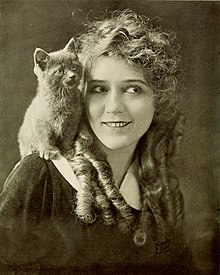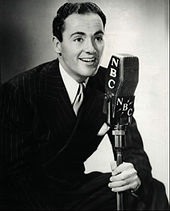The beginning of cinema in the United States was with silent films, and many talented artists took the silent screen to a new height with their exceptional performances. The whole story of the film had to be narrated by the artist’s expressions as there was no sound. It was a real show of the actor’s brilliance, and many actors earned a name in the silent film era. One of them is Mary Pickford.
Early Life
Gladys Louise Smith, known by her professional name Mary Pickford, was born in 1892 in Toronto, to an Irish Catholic mother and father, John Charles Smith, who was of Methodist descent. Mary had a disturbed childhood and family life. Her father was an alcoholic who abandoned his family and died when she was only six years old. Her mother started taking in tenants to make ends meet.
Early career
To the Smiths’ luck, a tenant, Mr. Murphy was a theatre stage manager. He offered Mary roles in a theatre stage drama. Thus, Mary’s career in art began at a very early age of just 7, for the Toronto Stock Company. With the same company, she acted in many roles subsequently. In 1907, she made her stage appearance in New York, in The Warrens of Virginia, by David Belasco. And upon his suggestion, she changed her name to Mary Pickford, which would be her stage name. Mary Pickford, soon came into limelight for her appealing face, framed by curls of golden hair.
A Career in the Film Industry
Mary Pickford began her career in the film industry with D.W. Griffith’s Biograph Company. Her first film was The Violin Maker of Cremona in 1909. She quickly caught the attention of the New Yorkers with her attractive face and acting. In the year 1909, she appeared in 51 films, almost one every week. She toured in 1910, with the Griffith Company and did some more films.
In 1910, she left Griffith to work with Independent Moving Pictures Company, only to return to work with Griffith in 1912. With Griffith, she made some of her best films. With dreams to take over Broadway in theatre, she returned and performed on stage again. This move of Mary’s proved to be a decisive step since she learnt that her true content was acting in the films.
Since then, she started working exclusively in the film industry. She worked with Adolph Zukor’s company, Famous Players in Famous Plays, which recorded theatrical players in replicas of their most memorable stage performances. It was, however, a disaster. From 1914 to 1916, Pickford continued giving spectacular performances in films. Tess of the Storm Country in 1914, firmly established her as “America’s Sweetheart. She became one of the most famous actresses, and persons in America – only surpassed by Charlie Chaplin in 1916.
During the World War, she toured the country, making promotional videos, adequately using her fame and celebrity status, in a patriotic responsibility.
In 1916, Pickford also began her career as a producer, having full control over the movies she acted in. During this period, she continued to produce and star in movies, the studio was known as Pickford-Fairbanks Studio. Through this, she rose to fame, producing quality films. She believed in paying attention to detail, and meticulously produced films earned her quite a name.
In 1919, she started a joint venture in a studio, called the United Artists Studios, with Griffith, Charlie Chaplin, and Fairbanks, who was to become her second husband. During this time, only in her 20s, she began starring as a child. She played powerful characters, including the working class, children, and women who build themselves. She played a strong and empowered woman, just as she believed she was. Her friend, Francis Marion, wrote her characters, showing her as the confident woman that she was.
She married Fairbanks in the 1920s, and together they embarked upon the journey to fame and success, producing their own films through their production house. As a producer, she attracted a European director Ernst Lubitsch, to Hollywood.
Pickford and her husband Fairbanks enjoyed a glorious time together, travelling and winning hearts. They were known as the most adorable couple of Hollywood. Though Fairbanks was somewhat a not-so-popular celebrity, romantic and bold Mary became the epitome of grace and the symbol of a virtuous lady. The mansion they built together in Beverly Hills, was nicknamed the Pickfair and was visited by the politicians and celebrities on and off. Taming of the Shrew was the only film she made with her husband, Fairbanks.
She produced various masterpieces through time, spirituous stories, including To Kill a Mockingbird, Sparrows, and The Night of the Hunter. The last silent film she made was a romantic comedy, My Best Girl. This film featured her future husband, Buddy Rogers, whom she would marry after the tragic end to her wonderful married life with Fairbanks.
The introduction of sound to the movies brought the downfall of Mary Pickford. She could not adjust to the microphone. She was not in favor of adding sound to the movies and thought it would destroy the reality. She underwent a major transformation in her appearance and cut her hair, which made headline in the New York Times since her golden curls had become quite a symbol of beauty and subtle femininity. Her film Coquette, however, was a major success during this time and won her the Oscar for best actress. She had now abandoned the children’s roles she was playing and started playing more sophisticated and glamorous roles.
Facing the challenge of sound, she could not quite recover from the drawback. Her next movie was not received well, and before retiring from acting in 1933, she made a film, starring Griffith, Fairbanks, and Charlie Chaplin. These established stars of the silent film era made this film to prove their ability in the motion pictures. Her last film was Secrets. After this film, in 1933, she retired from acting. However, she continued to produce movies working with the United Artists. Also, she wrote interesting books, which included Why Not Try God? (1934), The Demi-Widow (1935), and My Rendezvous with Life (1935).
Personal Life
Starting from disturbed family life, troubles always gathered round Mary Pickford. Her first marriage with Owen Moore was marred by his alcoholism, and she divorced him in 1920. Later she married Fairbanks and spent the most glorious years of her life with him. They were hailed as a celebrity couple invited to parties, parades and public events. Their mansion, PickFair, hosted glamorous parties, having figures like Charlie Chaplin, Albert Einstein, Sir Arthur Conan Doyle, and many other writers and celebrities. However, Fairbanks’ affairs soon came to public notice, and they separated in 1936.
In 1937, Pickford married Buddy Rogers, also an actor, and they adopted two children, Roxanne and Ronald Charles, with whom she had a troubled relationship.
Later Years
Having lived a life full of ebb and flow, led to Mary succumbing to alcoholism. She had lost her father and both siblings to this vice. Her relation with her adopted children was never complacent. This and the divorce from Fairbanks led her to withdraw from the public, and she was often found at Pickfair, only conversing with people through telephone. In 1955, her autobiography Sunshine and Shadow was published.
She was so reluctant to come out in public, that she received her Lifetime Achievement Academy Award from her home in 1976. A TV crew was sent to record her statement of thanks.
Mary Pickford died on May 29, 1979, from a cerebral hemorrhage at a hospital in Santa Monica, California. She was interred in the Garden of Memory of the Forest Lawn Memorial Park cemetery located in Glendale.
Filmography
Being a star of the silent film era, Mary produced and acted in many movies, starring in diverse characters, as a child, a glamorous lady, and a working woman. Beginning as a child star, by the end of her career, she had worked in countless movies. As it is not possible to list all, following are some of the popular ones:
- The Violin Maker of Cremona (1909)
- Hearts Adrift (1914)
- A Good Little Devil (1914)
- The Poor Little Rich Girl (1917),
- Rebecca of Sunnybrook Farm (1917)
- Stella Maris (1918)
- Johanna Enlists (1918)
- Pollyanna (1920)
- Little Lord Fauntleroy (1921)
- Rosita (1923)
- Little Annie Rooney (1925),
- Ben-Hur: A Tale of the Christ (1925)
- My Best Girl (1927)
- Coquette (1929)
- The Taming of the Shrew (1929)
- Kiki (1931)
- Secrets (1933)
As a Producer:
- Poor Little Rich Girl (1917)
- Pride Of the Clan (1917)
- Hoodlum (1919)
- Pollyanna (1920)
- Tess of The Storm Country (1920)
- Sparrows (1926)
- The Best Girl (1927)
- One Rainy Afternoon (1936)
- The Adventures of Don Coyote (1947)
- Sleep, My Love (1947)
- Love Happy (1949)
Conclusion
Like all public figures that rise to fame amidst troubled personal lives, Mary Pickford led a life in crests and troughs. Threatened by the modernism in the film industry, she lost her seating as the most wanted and loved actress. But she was and will be remembered, alongside her contemporaries, as a great actress of the Silent Screen, who left behind great works that will forever be cherished.






